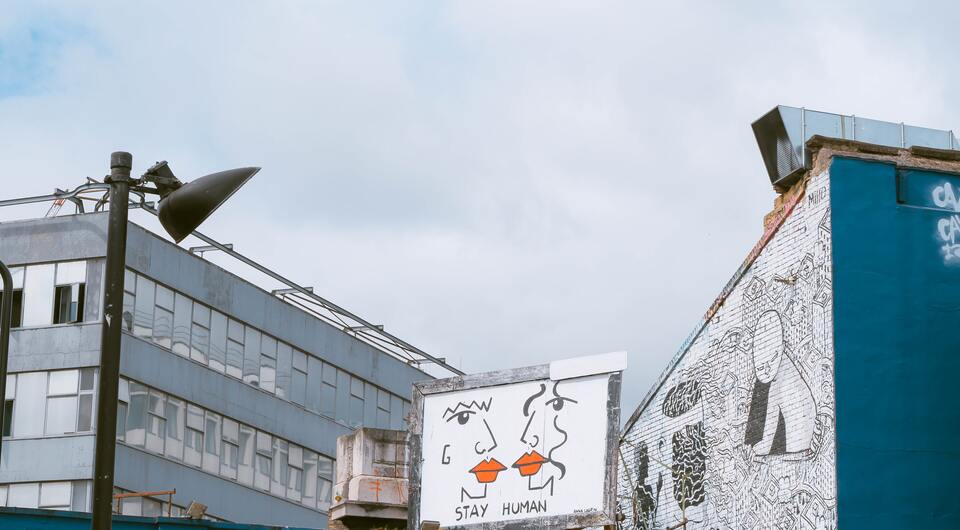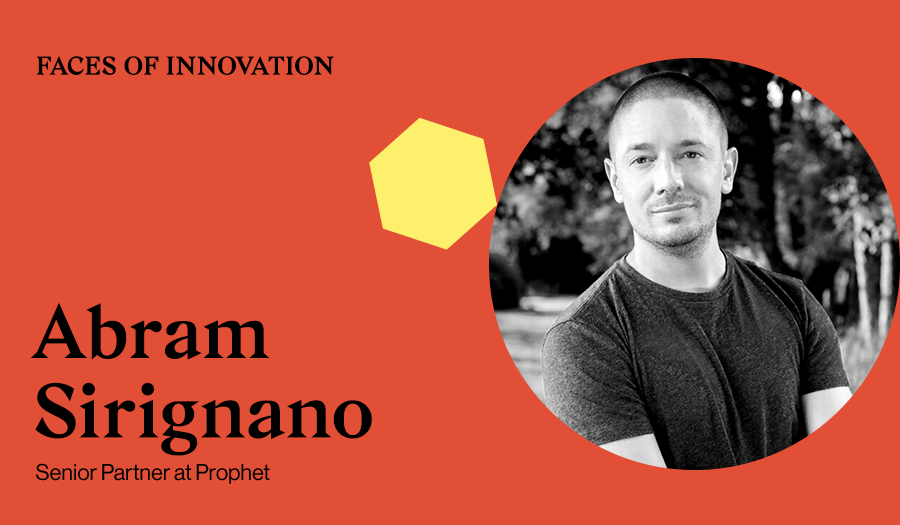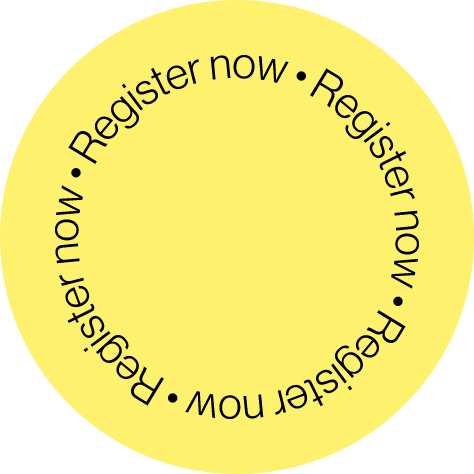Abram’s journey is a fascinating one. To wit: He left college early to pursue his own business. Naturally, we asked him: Why?
“Not many people ask me this. It's a great question to lean into,” Abram said. “I just wanted to solve hard problems, and I like working with people. Founding my own company felt like a really good way to do both pretty fast.”
For Abram, the opportunity to start his own company was right in front of him. In the summer of 1999, he was interning at the Foundation for Economic Education, and the think tank had just received a grant to convert a book into a website.
“No one knew how to do a website, and I said, I've got friends, I have designers, I've got programmers, let's go ahead and do this,” Abram said. And so he did. In hindsight, he tells us that what he ultimately built had turned out to be an early version of a social network for high school students. This “on-the-job training” planted a seed in Abram.
I got a fundamental grounding in how design and technology together can greatly advance a human problem.
The experience turned out to be a “masterclass” in driving fast outcomes and solving intractable problems, all with a human-centered lens.
Learning, Listening, and Serving Communities of People
With this experience in hand, Abram landed a gig in 2010 as the VP of Innovation with UniWorld Group (UWG), one of the longest-standing multicultural agencies in the U.S. The shop was really focused on “African American and Latinx and Asian communities, and the social issues that affect those communities, [like] systemic racism,” Abram said.
At UWG, Abram saw two key opportunities: to learn about diversity, equity, and inclusion, and to build an all-star team of designers, technologists, and “data folks” who could leverage the intersection of design and technology to drive positive change for these communities “in an outsized way”.
Early on, Abram identified one of the key challenges facing these communities was access to technology. As his team worked with brands to solve problems, he found it interesting to see how basic access to technology and access to the forms of “places and spaces” that people assumed would be broadly available, was far from being equally accessible to all.

It was really about how you “drive something that's actually of use to the community you're trying to serve” Abram said. Rather than, how do you market to these groups, “it's more, how can we actually support [them]? What can we do to serve and help?"
“For me, it was a chance to learn and just listen,” he said.
The concept of multicultural advertising existed then, as it does now. “There wasn't a client that we dealt with that didn't understand the value of speaking to underserved communities,” Abram said. But the motivation and mindset around this principle has come a long way.
Multicultural marketing was viewed as just a sub-segment of the population. I think what we're really starting to see in the last two to three years is a more profound understanding of structural discrimination, systemic racism, the way in which American society separates people into camps of privilege. That wasn't really the context we were working in. It was much more pragmatic.
Back then, “there was a lot of curiosity and sometimes skepticism that there would be a solution that would drive an outcome,” he said. Fast forward to today, and we see many shops that were founded by African American or Latinx strategists who knew their communities were underserved, he explains. “They stepped into the gap in a lot of cases, [and they] were trailblazers in a civil rights context as well.”
The Model of the Future
Following UWG, Abram went on to other roles at Acquity Group (acquired by Accenture in 2013) and Fjord, where he spent four years as a Managing Director, before joining Prophet as Senior Partner. We’re curious how all of Abram’s listening and learning (and a lot of doing!) is shaping the team that he’s building at Prophet, as well as the work they’re doing for clients.
Abram tells us that leaders in this space are perpetually thinking about the right operating model for design and innovation, and he places these models into two buckets.
The first is the studio model. “We take a brief from a client and we run in a very insular, protected way within our studio and our culture. We produce the answer [for] the client, and we move on to the next brief,” Abram said.
The other type of space is, “more of a consulting or advisory-led model, which [is working] in more of a blended model with the client,” Abram said. The goal here is to integrate working teams and co-create as much as possible.
The question at hand: Which model is better? Or really, is one better?
“I'm going to offer a very biased critique, because I've chosen my path. I love the studio model, if the analogy was, let's create a new phenomenal standalone product that we'll put out in the world, and let the world fall in love with. And then we'll move on,” Abram said. He mentions the next Herman Miller Eames chair as an example. The chair is brilliant, but it’s not transformational.

For these types of standalone projects, a studio has clear allure. But so does a tempting opportunity.
When someone calls and says, would you like to start over and go from scratch, it’s got my attention. That was the opportunity at Prophet: to really think about the first principles of a design-led, experience-led, innovation and transformation-focused practice.
“To get that opportunity to build it in the context of where the world is right now, and the kinds of briefs that matter to our clients, and really focusing on sustainability and the equity of how solutions are designed and distributed? Amazing,” Abam said.
“I think Prophet’s intersection of brand, experience, and growth is ideally suited to transformational work,” Abram said. To him, transformation is also about organizational change. He’s passionate about creating the conditions for building, scaling, and sustaining high-functioning teams.
Driving Real and Lasting Change
As we step into the new year, we’re curious to learn what Abram sees on the horizon in 2022. Notably, he wants to help people do something they’ve never done before. He also has a passion to mentor and accelerate junior designers, technologists, and strategists.
“I'm all about doing the thing that's never been done before and [facilitating] that in a transformational way. I'm really proud of the resilience of our clients and our teams in doing that again and again in the last 18 months in COVID conditions,” Abram said. “We've done more things that have never been done before in the last year and a half than I had done in the previous 10 years.”
How did he achieve this? Perhaps COVID was a chance for savvy businesses to lean into uncertainty. “In many ways, our clients had to change rapidly or face very meaningful capital crunches at the beginning of the pandemic, and many of them invest[ed] in that change, and reaped the benefits of it,” Abram said.
I think now, when we talk about digital transformation, it's almost a trope at this point. I think automation, enabling employees, becoming more efficient, focusing on the more market-centered, user-driven, human-driven [solutions]; I think these are things that are really sticking now, and it's because they had to.
In 2022, Abram is eager to see a greater focus on Environmental, Social, Governance (ESG) and Diversity, Equity, Inclusion (DEI) efforts, calling this the, “work of the future when it comes to design-led innovation.”
“I could not advocate more for people leaning into the pragmatic intersection of how those topics drive real change for people who need it most, but also drive commercial impact. I think that those are not mutually exclusive things,” Abram said.
You could truly drive a commercial outcome and a socially just outcome in equal measure. It takes innovation and focus.
We hope you find inspiration in Abram’s journey—we sure do! Looking to don your own detective cap and join Abram at Prophet to turn ideas into action? Be sure to reach out to Alex Pavlou to hear about open roles. Or, to listen and learn from other leaders in design and innovation, you can also register for the insider scoop here.



